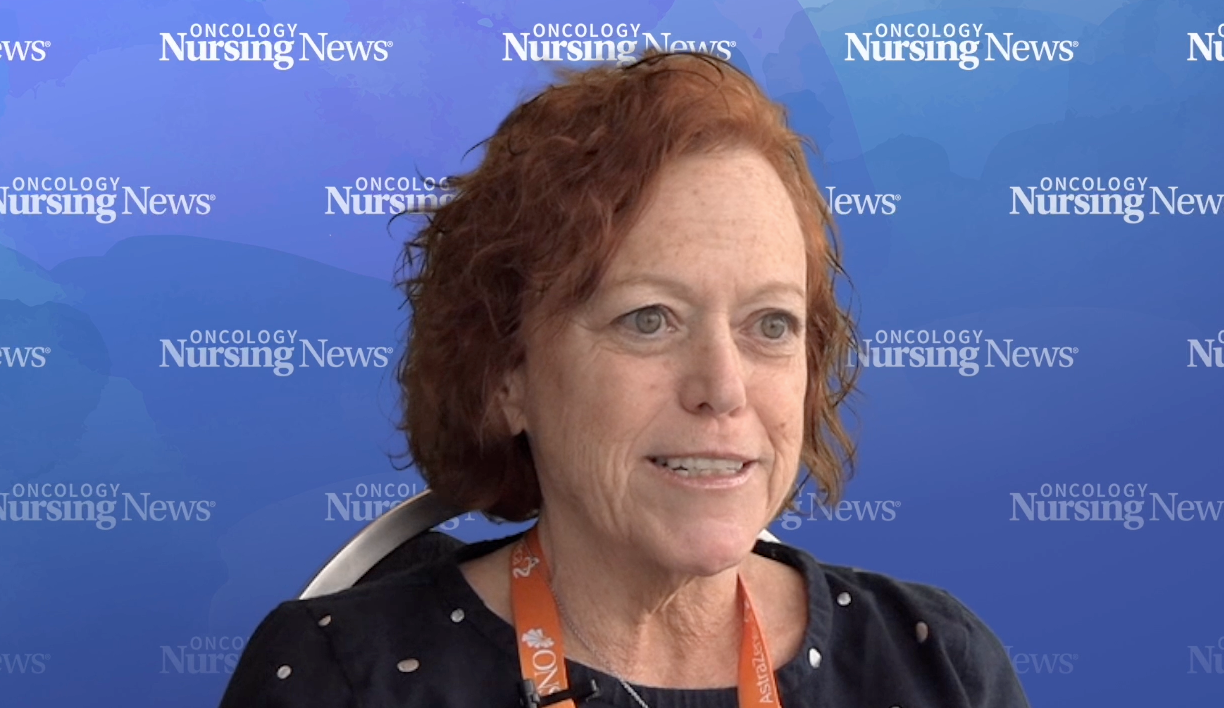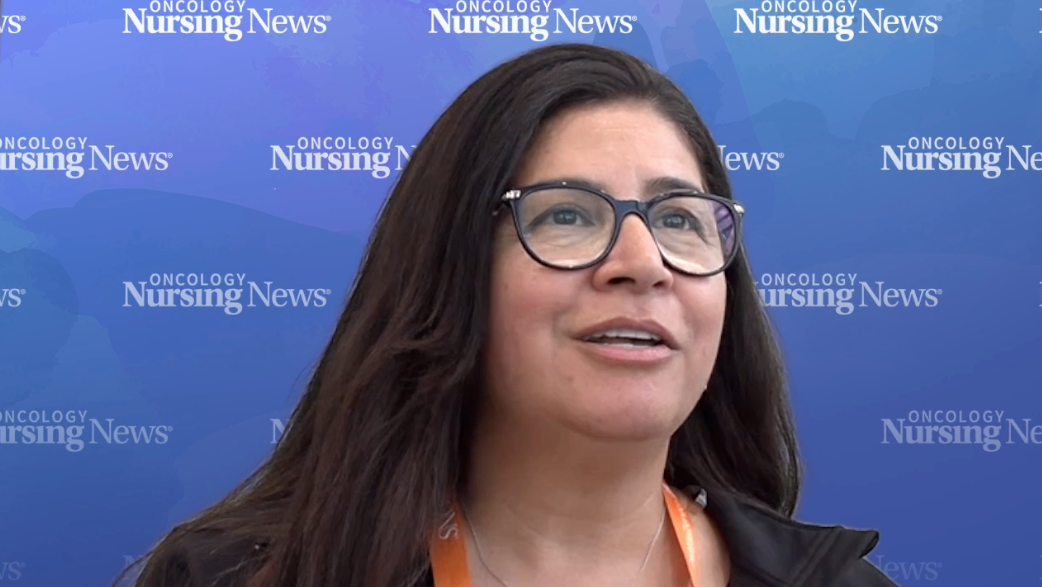Updated PFS Readouts From RUBY Trial Support Dostarlimab Use in Recurrent Endometrial Cancer
Dostarlimab met its primary end point in the phase 3 RUBY trial by increasing the 2-year progression-free survival rate to 36.1%, compared with 18.1% with placebo.
Mansoor Raza Mirza, MD

Patients with recurrent endometrial cancer, including those with mismatch repair–deficient (dMMR) and microsatellite instability–high (MSI-H) tumors, derived a significant progression-free survival (PFS) benefit with the introduction of dostarlimab (Jemperli)—an immune checkpoint inhibitor (ICI)--to their chemotherapy treatment with carboplatin and paclitaxel, according to updated results from the phase 3 RUBY trial (NCT03981796).1
Findings from the randomized, double-blind, multicenter study, which were presented at the 2023 Society of Gynecological Oncology (SGO) Annual Meeting, displayed that the trial met its primary end point of PFS. Patients in the overall population treated with the ICI plus chemotherapy (n = 245) experienced a 24-month PFS rate of 36.1% (95% CI, 29.3%-42.9%) compared with 18.1% (95% CI, 13%-23.9%) in the 249-patient placebo group to (HR 0.64; 95% CI, 0.51-0.80, P < . 001).
Moreover, in the dMMR/MSI-H population of patients on dostarlimab and chemotherapy (n = 53), the estimated PFS at 24 months was 61.4% (95% CI, 46.3%-73.4%) compared with 15.7% (95% CI, 7.2%-27.0%) in the placebo group (n = 65; HR 0.28; 95% CI, 0.16-0.50; P < .001). In the mismatch repair proficient (pMMR)/microsatellite stable (MSS) population of patients, a PFS benefit was observed for patients in the treatment group at 28.4% PFS at 24 months vs 18.8% in the placebo group, but these results did not meet the criteria for statistical significance (HR, 0.76; 95% CI, 0.59-0.98). According to the researchers, dMMR and MSI-H tumors account for 25% to 30% of endometrial cancer and due to the increased mutational burden of these tumors they are potentially vulnerable to anti–PD-1 and anti–PD-L1 therapies, which results of this study show.2
Through the course of the current study up to data cut off on September 28, 2022, separation of patients’ PFS results in the overall population and dMMR/MSI-H showed a steady increase of survival, explained Mansoor Raza Mirza, MD, who presented these data at the 2023 SGO meeting, which demonstrates further evidence for the hypothesis that ICI combined with chemotherapy is effective in this patient population.
Strong Responses Show Validity of ICIs in Endometrial Cancer
Although not found to be significant, and the data still at 33% maturity, overall survival (OS) favored patients in both the overall population and dMMR/MSI-H population. At the 24-month mark the OS was 71.3% (95% CI, 64.5%-77.1%) for patients on dostarlimab compared with 56% in the placebo group (HR 0.64%; 95% CI, 0.46-0.87; P = .021) whereas OS in the dMMR/MSI-H population was 83.3% on the combination therapy compared with 58.7% for patients on placebo at 24 months (HR 0.30; 95% CI, 0.13-0.69). OS at 24 months was closer in the pMMR/MSS population at 67.7% for patients on the ICI combination vs 55.1% of patients in the placebo arm (HR 0.73; 95% CI, 0.52-1.02).
In the overall population 34.5% of patients in the placebo arm were then given subsequent therapy and 38.5% of patients in the placebo arm with dMMR/MSI-H tumors received the same treatment compared with approximately 15% of patients in the dostralimab arm in both groups.
Secondary end points of the trial included objective response rate (ORR) and duration of response (DOR); patients treated with the combination had an ORR of 77.6% (95% CI, 63.4%-88.2%) compared with 69% (95% CI, 55.5%-80.5%) on the placebo treatment. Among the responses, 30.6% were complete responses in the treatment arm with partial responses at 46.9% and a disease control rate (DCR) of 89.8% (95% CI, 77.8%-96.6%) was seen for patients on the combination.
Similar results benefited patients in the dMMR/MSI-H tumor population with 23.3% of the 68.1% (95% CI, 60.4%-75.2%) ORR of patients on the combination having a complete response compared with an ORR of 63.4% (95% CI, 55.4%-70.8%) and complete responses of 19.3% of patients in the placebo arm.
DOR at 12 months or greater in the overall population was 40.3% in the treatment arm compared with 20.4% in the placebo arm at a median of 10.6 months for patients on dostarlimab vs 6.2 months for patients on placebo. Moreover, the median DOR for patients in the pMMR/MSS population was 8.6 months vs 6.3 months on placebo but in the dMMR/MSI-H population a median DOR was not reached in the treatment arm. However, 57.9% of patients in that group had a DOR of 12 months or greater compared with 34.2% in the pMMR/MSS population.
“These [data are] very important because we look here at the [ORR] and the hypothesis we have that if you give chemotherapy, you get a better response with immune therapy,” explained Mirza, Chief Oncologist at the Department of Oncology, Rigshospitalet, Copenhagen University Hospital, Denmark, in his presentation. “As you can see...the separation of the curves from the very beginning gives us a hint that probably this is the right hypothesis that chemotherapy plus immunotherapy is beneficial.”
Safety Signals Present Manageable Outcomes
Among the patients with endometrial cancer patients in the treatment arm were on treatment for a median of 43 weeks compared with 36 weeks for patients on placebo with serious treatment-emergent adverse events (TEAEs) observed in 37.8% of patients in the combination arm compared with 27.6% in the placebo arm.
Patients were randomized 1:1 to receive either 500 mg of dostarlimab, given intravenously along with 5 mg/mL/min of carboplatin, or chemotherapy once every 3 weeks for 6 cycles. Those in the experimental arm then received dostarlimab at 1000 mg intravenously once every 6 weeks up to 3 years. Of the 494 patients initially randomized 52 remained on treatment with dostarlimab at the time of data cut off compared with 36 on placebo. Most patients in either arm had recurrent disease but 33.9% of patients in the overall population had primary stage IV disease and 18.4% had primary stage III disease. The majority of patients had measurable disease at the time of baselines with just 19.6% given prior chemotherapy.
Seventeen percent of patients discontinued therapy in the dostarlimab arm, whereas discontinuation occurred in 9.3% of patients on placebo. Moreover, around 10% in the treatment arm discontinued either chemotherapy option due to a TEAE and 5 patients died due to any TEAE.
The most common AEs that occurred, or worsened during the treatment, in the dostarlimab group vs placebo group included nausea (53.9% vs 45.9%), alopecia (53.5% vs 50.0%), and fatigue (51.9% vs 54.5%). The AEs with the largest difference in incidences between the groups were rash and maculopapular rash with both AEs reported more frequently in the ICI and chemotherapy arm vs the placebo and chemotherapy arm at 22.8% vs. 13.8% and 14.1% vs. 3.7%, respectively. Rash and maculopapular rash accounted for the most common AEs that led to discontinuation of treatment with 1.2% each.Thrombocytopenia (1.2%) was the most common AE in the placebo group that led patients to discontinue.
The most common immune-related AEs were hypothyroidism (11.2% vs 2.8%), rash (6.6% vs 2.0%), arthralgia (5.8% vs 6.5%), and increase in alanine aminotransferase levels (5.8% vs 0.8%). At the meeting, Mirza provided patient reported outcomes on quality of life that were in the works and were set to be presented later this year but believed they favored patients on the ICI as dostarlimab did not interrupt the use of chemotherapy.
“Substantial unprecedented benefit in dMMR patients and clinically meaningful long-term benefit observed in the pMMR patients along with the safety profile of the [combination] was manageable and generally consistent with that of the individual drugs,” concluded Mirza. “[Therefore,] dostalimab plus carboplatin/paclitaxel represents a new standard of care for patients with primary advanced and recurrent endometrial cancer.
References
1. Mirza M, Chase D, Slomovitz, et al. Dostarlimab in combination with chemotherapy for the treatment of primary advanced or recurrent endometrial cancer: a placebo-controlled randomized phase 3 trial (ENGOT-EN6-NSGO/GOG-3031/RUBY). Presented at: 2023 SGO Annual Meeting on Women’s Cancer; March 25-28, 2023; Tampa, Florida.
2. Mirza MR, Chase DM, Slomovitz BM, et al. Dostarlimab for Primary advanced or recurrent endometrial cancer. N Engl J Med. Published online March 27, 2023. doi:10.1056/NEJMoa2216334




